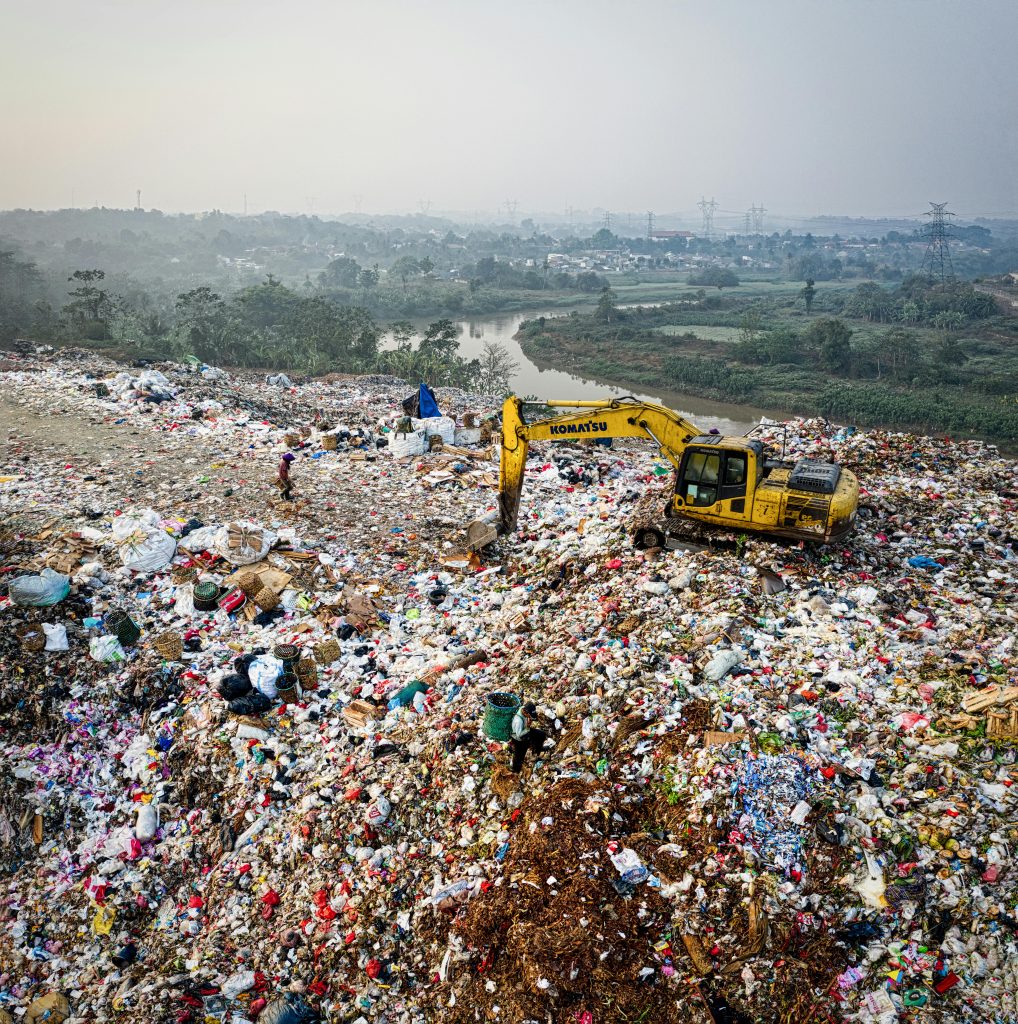
What is sustainable living? How Your Choices Shape a Sustainable Present and Future
By embracing sustainable living, we adopt practices that contribute to the well-being of the environment, society, and economy.

We're well aware of our tendency to waste. Whether it's something we accidentally spill, grow tired of, or simply no longer required because we've replaced it with something new. Let's discover how household waste impacts our environment, and hopefully, this will inspire us to create a new mindset.
Households generate vast amounts of waste globally daily. Let me put this into numbers. For example, the EU produces more than 200 million tons of household waste annually (1). The composition of our waste depends on our daily activities, consumption habits, and lifestyle choices. It is a diverse and complex composition that, in the first place, includes food, paper, cardboard, plastic, metal, glass, and clothing. I don't need to go into details. We already know that we waste everything. Everything that we spill, everything that we get bored with, and everything that we no longer need because we had to replace it with something new.

Photo by Jilbert Ebrahimi on Unsplash
The first step within the sustainable lifestyle is ensuring that your consumption habits come from your needs, not your emotions (defense mechanism, comfort, loneliness, heartache). The impact of this waste extends far beyond our garbage bins, affecting ecosystems, natural resources, and the health of our planet.
Check out this video. You will realize you aren't alone in your emotional struggle to buy new stuff you don't need. You will learn about emotional spending, and maybe you will discover your reason for doing it.
https://www.youtube.com/watch?v=1L0mIRZ6IyQ
At the heart of household waste composition lies a mixture of materials, each with its environmental footprint. Let's see how scientists analyze our trash bin composition and its influence on the environment.
The environmental impact of food production and consumption is worse when food is wasted instead of consumed. According to the FAO, approximately one-third of food produced for human consumption is lost or wasted worldwide (2). Food waste stands in the way of sustainability. Wasting billions of tons of food creates unnecessary hunger and economic losses.
UNEP Food Waste Index Report 2021 report estimates that 61% of food waste comes from our households and rots in landfills while producing the greenhouse gas methane (3).
The simplest explanation that I found within research articles is from Scherhaufer S (2018): "The supply chain starts with the primary production of 1.28 kg of apples, where 0.04 kg are removed from the step of the chain as food waste, then the remaining 1.24 kg of food are processed, where another 0.02 kg are removed as food waste again, then 1.22 kg of food are distributed and so on. Finally, 1 kg of apples is finally eaten by consumers and a total of 0.28 kg of apples is wasted along the whole supply chain. In other words, for every 1 kg of apples eaten by the consumer, 1.28 kg would need to be produced." (4)
Keep in mind, when you enter your kitchen, that if you waste food, you also waste resources used for its growth, harvest, packaging, and transport. Also, you are contributing to climate change, acidification, and eutrophication.

Photo by Becca Tapert on Unsplash
Paper waste has a significant impact on the environment. From the initial harvesting of trees for pulp to the energy-intensive manufacturing process and eventual disposal, paper consumption contributes to deforestation, greenhouse gas emissions, water pollution, and waste management challenges. Disposing of paper waste in landfills initiates methane emissions, while incineration releases harmful pollutants into the air.
Studies analyze various environmental impact categories. Key categories include energy use, resource consumption, energy-related impacts (e.g., global warming potential), emissions toxicity, waste, and wastewater generation. Energy consumption in paper systems stands out as a significant environmental factor.
Virgin paper production typically results in higher wastewater discharge compared to recycling, which historically involved chlorine bleaching but now uses alternatives like chlorine dioxide or ozone (5).
Recycling paper is crucial for conserving natural resources, reducing energy consumption, and mitigating the environmental footprint of paper production. Embracing practices such as paper recycling, using recycled paper products, and promoting digital alternatives can help minimize the environmental impact of paper waste.
The plastic, notorious for its durability, has persisted in the environment for centuries, harming wildlife and leaching toxic chemicals into soil and water.
Since the beginning of large-scale production of synthetic polymers, commonly known as plastics, in the 1940s, there has been a significant production, consumption, and disposal of plastic solid waste (PSW). Consequently, recycling PSW has become a focal point for numerous researchers over the past few decades, driven by mandates and growing environmental concerns. Plastics find extensive use in various facets of our daily lives, including electrical insulation, packaging, and more. As a result, it's unsurprising to discover a substantial presence of PSW in our trash cans (6).
The most common interactions between biota and plastic in the environment are entanglement and ingestion.
Entanglement may damage the animals, reduce mobility, and even cause death (7, 8). These outcomes are noticed throughout the oceans (9), terrestrial habitats (10), and freshwater (8).

Photo by Nataliya Vaitkevich: https://www.pexels.com/photo/fish-in-a-clear-plastic-by-the-seashore-4813988/
The various sizes and shapes of macroplastic debris make them easy to ingest by a wide range of species. Floating plastics pose particular challenges. Some of the most striking images of plastic ingestion involve marine megafauna. Many species of turtles ingest plastics, along with filtering and predatory whale species. Plastic ingestion has been also documented in numerous fish species (11).
Metal waste poses significant environmental challenges due to its persistence in the environment and the energy-intensive processes involved in its extraction, processing, and disposal. Improper disposal of metal waste can lead to soil and water contamination, disrupting ecosystems and creating health risks to humans and wildlife (12).
Glass waste presents environmental challenges due to its slow decomposition rate and potential for causing harm if not properly managed. When glass waste is disposed of in landfills, it occupies valuable space and may not decompose for thousands of years. Additionally, broken glass can pose safety hazards to humans and wildlife. The recycling process of waste glass into ground glass powder for producing new glass involves significant energy consumption and the release of CO2 emissions (in the EU-570 kg of CO2 per kilogram of glass)( 13).
Textile waste poses significant environmental challenges due to its volume and composition. When clothing and textiles are discarded (either due to wear and tear or fashion trends change), they often end up in landfills, where they contribute to pollution and take up valuable space. Synthetic fibers commonly found in textiles can take hundreds of years to decompose, releasing harmful chemicals and microplastics into the environment in the process. Additionally, the production of textiles involves significant water, energy, and chemical inputs, contributing to resource depletion and pollution.

Photo by Tom Fisk: https://www.pexels.com/photo/drone-shot-of-dumpsite-3174350/
Clothing and household textiles constitute a relatively minor percentage of overall household waste. However, enhancing their collection methods could yield significant environmental benefits (14).
The environmental impact of household waste extends beyond its physical presence, encompassing energy consumption, resource depletion, and pollution. The production, transportation, and disposal of consumer goods also require energy and resources, contributing to greenhouse gas emissions and exacerbating climate change. Moreover, improper disposal of hazardous waste, such as batteries and electronic devices, poses risks to human health and the environment.
Addressing the issue of household waste requires a multifaceted approach that emphasizes waste reduction, recycling, and sustainable consumption practices. By minimizing waste generation, reusing materials, and responsibly disposing of recyclables and hazardous waste, individuals can mitigate their environmental impact and contribute to a more sustainable future. Additionally, advocating for policies and initiatives that promote waste management and environmental stewardship is essential for addressing the root causes of waste pollution and fostering a culture of sustainability.
In conclusion, understanding household waste composition and its environmental impact is crucial for the new mindset development. This new mindset will find a practical way to waste minimalization. Also, it will be against impulsive buying of things that we don't need but for some emotional reason- we must have.
Later, this mindset will raise awareness, adopt eco-friendly behavior, and advocate for positive change. We can work together to reduce our ecological footprint and preserve the health and vitality of our planet for future generations.
Where to start? I believe the first step is to deal with our emotional impulse to purchase items we don't need. Buying fewer unnecessary items not only helps to mitigate the adverse effects of overconsumption on the environment but also allows individuals to save money and declutter their lives. Additionally, buying less encourages a shift towards a more mindful and intentional approach to consumption, enabling greater appreciation for the things that truly matter and promoting a sense of fulfillment beyond material possessions.
Sometimes, I see a flashy gadget or trendy clothing item while browsing online or walking through a store. Despite knowing that I have similar items at home or that the purchase isn't essential, I feel a sudden urge to buy it, perhaps because I need instant comfort or I'm bored. However, after the initial excitement wears off, I realize that the item is collecting dust on a shelf or buried in a closet, unused and forgotten.
Do you feel like that sometimes? Do you feel an urge rather than a necessity when shopping?

By embracing sustainable living, we adopt practices that contribute to the well-being of the environment, society, and economy.

The idea of a sustainable diet was established in 2010.

A sustainable diet is considered to be a diet that resembles a nutritionally healthy diet.

Sustainability goes beyond admiration; it is a commitment to maintaining the delicate balance between our species and the planet.

Several scientists are “defending” meat consumption, replying that red meat is the source of essential nutrients.
Welcome to Sustainable Living by Science. With our scientific mindset, we are exploring how to nurture our well-being while caring for the environment. We are sharing the meaning of sustainability through evidence-based practices. Join us on this journey towards a greener, healthier future where science guides us to make the best choices for ourselves, the planet, and others.
All content is © 2024 by Sustainable Living by Science. All rights reserved.